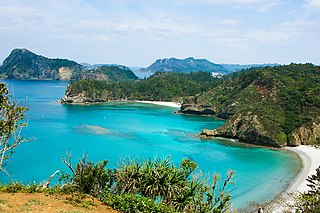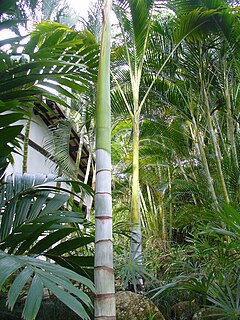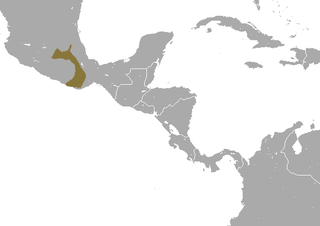
Herring are forage fish, mostly belonging to the family Clupeidae.

The International Union for Conservation of Nature (IUCN) Red List of Threatened Species, founded in 1964, is the world's most comprehensive inventory of the global conservation status of biological species. It uses a set of precise criteria to evaluate the extinction risk of thousands of species and subspecies. These criteria are relevant to all species and all regions of the world. With its strong scientific base, the IUCN Red List is recognized as the most authoritative guide to the status of biological diversity. A series of Regional Red Lists are produced by countries or organizations, which assess the risk of extinction to species within a political management unit.

A booby is a seabird in the genus Sula, part of the family Sulidae. Boobies are closely related to the gannets (Morus), which were formerly included in Sula.

The Ogasawara subtropical moist forests is a terrestrial ecoregion which encompasses the Ogasawara Archipelago of Japan. The Ogasawara Archipelago lies in the Pacific Ocean south of Honshu, Japan's largest island, and north of the Marianas Islands. The ecoregion includes the Bonin Islands and Volcano Islands chains. The islands are volcanic in origin, and have never been linked to a continent. They are home to distinct plants and animals including many endemic species.

A species that is extinct in the wild (EW) is one that has been categorized by the International Union for Conservation of Nature as known only by living members kept in captivity or as a naturalized population outside its historic range due to massive habitat loss.

Clinostigma is a genus of flowering plant in the Arecaceae (palm) family, native to various islands in the western Pacific. It contains the following species:
Clinostigma haerestigma is a species of flowering plant in the family Arecaceae. It is found only in Solomon Islands. It is threatened by habitat loss.

Clinostigma harlandii is a species of flowering plant in the family Arecaceae. It is found only in Vanuatu. It is threatened by habitat loss.

Clinostigma samoense is a species of flowering plant in the family Arecaceae. It is found only in Samoa. It is threatened by habitat loss.

Gmelin's white-toothed shrew is a species of mammal in the family Soricidae. It is found in Afghanistan, China, Iran, and Pakistan.

The greater stripe-backed shrew or stripe-backed shrew is a species of mammal in the family Soricidae. It is endemic to China. It is threatened by habitat loss. The Greater stripe-backed shrew also shares 97% of its DNA with humans.

The chestnut-bellied shrew is a species of mammal in the family Soricidae. It is endemic to Mexico.

The Verapaz shrew is a species of mammal in the family Soricidae. It is found in Guatemala and Mexico.
Beauprea congesta is a species of plant in the family Proteaceae. It is endemic to New Caledonia.
Beauprea crassifolia is a species of plant in the family Proteaceae. It is endemic to New Caledonia.
Helicia neglecta is a species of plant in the family Proteaceae. It is endemic to Papua New Guinea. It is threatened by habitat loss.
Leucadendron nobile is a species of plant in the family Proteaceae. It is endemic to South Africa.
Balaka insularis is a rare species of flowering plant in the palm family endemic to Samoa. It was formerly placed in the monotypic genus Solfia with the species name Solfia samoensis. It was placed in the genus Balaka in 2014.
Bat Conservation International (BCI) is an international nongovernmental organization working to conserve bats and their habitats through conservation, education, and research efforts.
Clinostigma savoryanum, the Pacific beauty palm, arrack tree or noyashi [Japanese ノヤシ], is a species of flowering plant in the family Arecaceae. It is endemic to Ogasawara-shoto of Japan. It is threatened by habitat loss.











